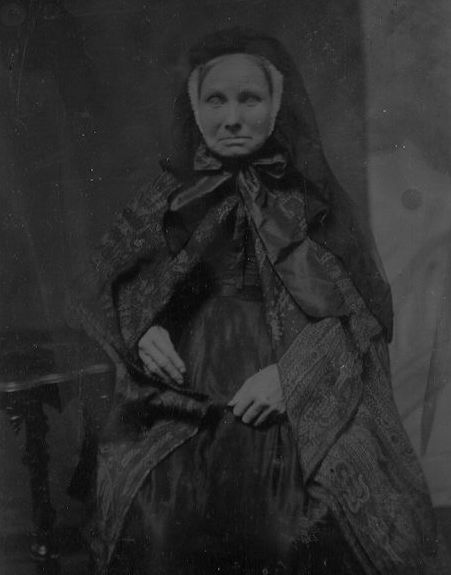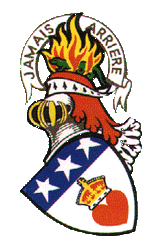 Douglas was born in Carr,
Perthshire,
Scotland to
Charles Ayton Douglas and Christian Hepburn of Kinglassie. Little is known of
his early life, although it is established that he could speak six languages. He
joined the Royal Navy at the age of twelve, and spent some time in the Dutch
service before resuming his career with the British. He was a midshipman at the
siege of Louisbourg in 1745. In 1753, he was promoted to lieutenant, became a
commander in 1759, and by the end of the
Seven Years War in 1763, was captain of HMS Syren. While commanding
the Syren, Sir Charles reported the attack on
St. John's and took part in recapturing
Newfoundland.
Douglas was born in Carr,
Perthshire,
Scotland to
Charles Ayton Douglas and Christian Hepburn of Kinglassie. Little is known of
his early life, although it is established that he could speak six languages. He
joined the Royal Navy at the age of twelve, and spent some time in the Dutch
service before resuming his career with the British. He was a midshipman at the
siege of Louisbourg in 1745. In 1753, he was promoted to lieutenant, became a
commander in 1759, and by the end of the
Seven Years War in 1763, was captain of HMS Syren. While commanding
the Syren, Sir Charles reported the attack on
St. John's and took part in recapturing
Newfoundland.
Following the war, Sir Charles went to St. Petersburg to help re-organize the
Russian navy in 1764-1765.
American Revolutionary War years
After the Revolutionary War broke out in America in 1775, Douglas was given
command of a squadron to relieve Quebec from the siege. When he arrived at the
Gulf of St. Lawrence, he decided to ram the ice and successfully made his way up
the river, surprising the Americans and putting them on the run. He was also in
charge of creating a navy from scratch to fight on Lake Champlain, and that
small fleet routed the Americans under Benedict Arnold. In 1777, he was made a
baronet for his service in Quebec. As captain of HMS Stirling Castle, he took
part in the Battle of Ushant.
In 1781, Sir Charles became Captain-of-the-Fleet for George Brydges Rodney,
1st Baron Rodney, and was with Rodney on his flagship, Formidable, at the Battle
of the Saintes off Dominica, where on 12 April 1782, they defeated the Comte de
Grasse by breaking the French line. Douglas is credited by many, including Sir
Charles Dashwood (a midshipman present at the time who later became an admiral
himself), for having the idea for the manoeuvre, but it is a subject of much
debate.
Following the war, he was the Commander-in-Chief of North America at the
Halifax, Nova Scotia Station, but resigned due to a conflict.
In 1783, whilst flying his flag on HMS Assistance,
Lt Hamilton Douglas Halyburton, The Earl
of Morton's son, and 12 crew members lost their lives pursuing
deserters.
In 1787 he became
a rear-admiral, and in 1789 was once again made commander of the Nova Scotia
station, but died of apoplexy before taking his post.
Naval career:
-1740 Joined Royal Navy at age twelve
-1745 Midshipman at Siege of Louisbourg
-1753 Lieutenant in the Royal Navy
-1759 Promoted to Commander
-1761 Made Post-Captain; Commander of HMS Unicorn, 28 guns
-1762 Commander of HMS Syren, 20 guns, Newfoundland
-1767 Commander of HMS Emerald, 32 guns -1770 Commander of HMS St. Albans, 61
guns
-1775 Commander of HMS Isis, 50 guns, Quebec
-1776 Commodore in charge of building Lake Champlain fleet
-1777 Commander of HMS Stirling Castle, 64 Guns
-1778 Commander of HMS Duke, 98 guns, Channel Fleet
-1781 Captain-of-the-Fleet of Sir George Rodney, flagship HMS Formidable,
West Indies
-1783 Commodore and Commander-in-Chief of Halifax Station, HMS Assistance, 50
guns
-1787 Promoted to Rear-Admiral
-1789 Commander-in-Chief of North American Station, HMS London Man, 50 guns
Personal life:
 |
| Sarah Wood of Yorkshire |
Douglas was married three times: first to a Dutch woman called Uranie Lidie
Marteilhe, with whom he had a son (His biographer, Stephen Watson Fullom, says
two sons) and a daughter; second to Sarah Wood of
Yorkshire, the mother of Sir
Howard Douglas; and third to a woman named Jane or Helen. There is a great
deal of confusion regarding the identity of Sir Charles' third wife, whose last
name has been variously reported as Baillie, Grew, and Brisbane. It appears that
some sources have mistaken his sister, Helena Baillie, for his third wife
because she raised his younger children while he was at sea. The name Helen
Brisbaine is probably also an error based on a mistake in The Scottish Nation
(1862) where it says she was married to Admiral Sir Charles Douglas when, in
fact, she was the wife of Admiral Sir James Douglas. When his eldest daughter,
Lydia Mariana, married Rev. Richard Bingham against his wishes, he disinherited
her. Following his death, Lydia and her husband sued for a share of his estate,
and the case was appealed until finally being decided against them in the House
of Lords in 1796. The case is made famous because of a letter Lydia had written
to Adam Smith, a friend and distant relative of Sir Charles, requesting his
assistance in reconciling the father and daughter.
Sir Charles was known as a mechanical genius, and many of his suggestions for
improvements on naval vessels, including the substitution of flintlocks for
matches, were adopted by the Admiralty for the entire Royal Navy.
He was succeeded as Baronet of Carr by his sons,
Vice-Admiral Sir William Henry Douglas, 2nd Baronet, and General Sir Howard Douglas
, 3rd Baronet, who became a General, lieutenant-governor of New Brunswick, MP
for Liverpool, and Lord High Chancellor of the Ionian Islands.
Both Douglastown and Douglas, Nova Scotia, are named after him. The song "Caillich
Odhar" was composed by Nathaniel Gow in his honour.
References:
-Encyclopædia Britannica Eleventh Edition
-Fullom, S.W. Life of General Sir Howard Douglas (1865)
-Clark, William Bell. Naval Documents of the American Revolution, vol. 3-6
(1968-1971)
-Douglas, Percy. History of the Family Douglas, vol. I.
-Paton, Thomas S., Reports of Cases Decided in the House of Lords, Upon
Appeal from Scotland, from 1753 to 1813, vol. III (1853)
-The Complete Baronetage
-Burke's Peerage and Baronetage (1938)
-Leigh Rayment's Baronetage Page.


